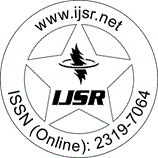Downloads: 2
India | Agriculture and Animal Sciences | Volume 14 Issue 11, November 2025 | Pages: 800 - 807
Assessing the Cytotoxic Impact of Pesticide-Contaminated Agricultural Extracts
Abstract: The extensive use of pesticides in conventional farming raises serious concerns about residual toxicity in food and its potential health risks. This study evaluates the cytotoxic effects of homogenates from pesticide-exposed cumin and grapes on six human cell lines: HepG2 (liver), TK6 (lymphoblastoid), THP1 (monocytic), Jurkat (T-cell leukemia), Raji, and Daudi (B-cell lymphoma). Dose-dependent cytotoxicity was observed across all cell lines, with cell viability decreasing at 5%, 10%, and 20% homogenate concentrations. THP1 cells were most sensitive, showing viability below 30% at the highest grape homogenate dose, while HepG2 cells were comparatively resistant. To benchmark toxicity, chlorpyrifos (CPF), a widely used organophosphate pesticide, was tested. CPF exposure (1?20 ?M) resulted in significant viability loss, especially in Jurkat and TK6 cells. Doxorubicin (20 ?M), used as a positive control, induced severe cytotoxicity across all lines, validating assay reliability. Additional tests on Raji, THP1, and Daudi cells confirmed CPF and Doxorubicin?s cytotoxic potential. These findings highlight the health risks posed by pesticide residues in food and emphasize the need for stricter monitoring and safer agricultural practices. The study provides foundational evidence for further research into detoxification strategies and regulatory reforms to reduce consumer exposure.
Keywords: Agrochemical Exposure, Immunotoxicology, Pesticide Residues, Agricultural Extracts, Chlorpyrifos, CPF
How to Cite?: Hiren Patel, Rakesh Rawal, "Assessing the Cytotoxic Impact of Pesticide-Contaminated Agricultural Extracts", Volume 14 Issue 11, November 2025, International Journal of Science and Research (IJSR), Pages: 800-807, https://www.ijsr.net/getabstract.php?paperid=SR251110220440, DOI: https://dx.doi.org/10.21275/SR251110220440
